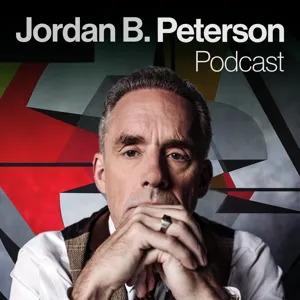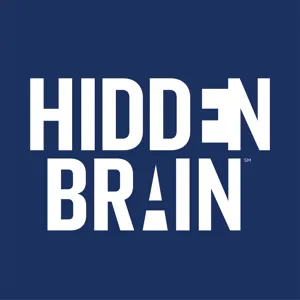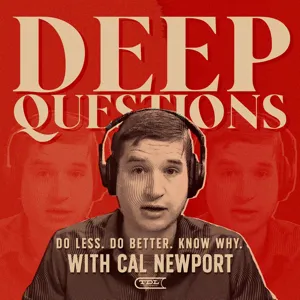Podcast Summary
Strengthening Community Connections in Uncertain Times: Neighbor to Neighbor highlights the significance of relying on neighbors for social bonds and disaster preparedness. Focus on transparent plans with Visible, explore with the Hyundai Santa Fe, trust UPS Store for holiday shipping, and face personal challenges with the Cure of Folly podcast.
Building strong community connections is essential in uncertain times. Neighbor to Neighbor, a California volunteer network, emphasizes the importance of relying on neighbors for social bonds and disaster preparedness. Meanwhile, Visible offers a transparent wireless plan, allowing you to focus on your community without worrying about hidden fees. Additionally, the Hyundai Santa Fe provides the means to explore and bring your family closer. The UPS Store is there to help you with your holiday shipping needs, ensuring your packages arrive on time. Lastly, the stuff to Blow Your Mind podcast discusses the allegorical painting "The Cure of Folly" by Hieronymus Bosch, emphasizing the importance of facing and overcoming personal challenges, just like building community connections.
Exploring themes of madness and healing in European art: European art from the medieval to early modern periods depicted madness and healing through vivid and often disturbing imagery, reflecting a deep fascination with the human condition and desire to understand mental and emotional distress
Medieval and early modern European art, as exemplified by works like "The Temptation of St. Anthony" by Hieronymus Bosch, "The Stone of Madness" by an unknown artist, and "The Triumph of Folly" by Quentin Massys, explored themes of madness and healing through vivid and often disturbing imagery. These paintings often featured people undergoing surreal and gruesome procedures, interpreted as attempts to remove the "stone of madness" or symbolic representations of folly. While the specific meanings of these works are complex and open to interpretation, they reflect a deep fascination with the human condition and the desire to understand and cope with mental and emotional distress.
Medieval Surgery and the Stone of Madness: During medieval times, the belief in a 'stone of madness' causing mental illness led to unconventional healing methods like trepanation and stone removal, reflecting the dangerous and limited alternatives in surgery.
During medieval and early modern European art, there is a recurring theme of the "stone of madness," a visible lump on the forehead believed to cause madness and associated with the idea of removing it. This could represent a real physical condition, quackery, or well-meaning but misguided attempts at healing. The atmosphere of surgery during the Middle Ages was dangerous, and people turned to unconventional methods like the "stone removal" as a last resort. While it may seem absurd to us now, it's essential to consider the context and limited alternatives available at the time. In today's episode, we will delve deeper into medieval surgery, trepanation, and the removal of stones from the body, and explore the potential meanings behind this artistic tradition.
The Distinct Roles of Barbers and Surgeons in Medieval Times: During medieval times, barbers and surgeons had distinct roles. Barber surgeons performed surgeries, while academic physicians wrote about them. Today, we have medical specializations, but initiatives like Neighbor to Neighbor encourage building stronger community connections.
During medieval times, the roles of barbers and surgeons were distinctly different. While academic physicians studied the body and wrote about surgical procedures, barber surgeons were the ones who applied their skills in cutting and healing. They performed surgeries, extracted stones, and even did bloodletting. This division of labor made sense because barbers already had the necessary tools and were in close contact with people's bodies. The Hippocratic Oath, written by the ancient Greek physician Hippocrates, even acknowledged this division, with doctors refraining from performing surgery. This historical context still applies today, as medical specializations exist, but we don't let barbers perform neurosurgery. Instead, we have networks like Neighbor to Neighbor that encourage community building and support, reminding us that our neighbors are valuable resources for creating meaningful social bonds. In the modern world, where communities can sometimes feel disconnected, initiatives like Neighbor to Neighbor empower individuals to build stronger connections with their neighbors. By lending a helping hand or standing together during natural disasters, we can create a more resilient and supportive community. So, take inspiration from the historical division of labor between barbers and surgeons and strive to foster connections with those around you.
Technology and Medical Advancements Improve Our Lives: From allergy sprays and identity theft protection to safer surgeries and cashback rewards, technology and medical advancements enhance our daily experiences. However, it's crucial to be aware of the risks and take necessary precautions.
Advancements in technology and medical knowledge have significantly improved our quality of life in various ways. For instance, Astepro, a 24-hour steroid-free allergy spray, offers fast-acting relief compared to other allergy sprays. Meanwhile, identity theft protection services like LifeLock help safeguard against threats that are increasingly common. In the past, surgeries were dangerous due to the lack of sterile equipment and effective anesthesia, leading to high levels of pain and a risk of infection. Today, we have antiseptic methods and anesthesia to ensure safer surgical procedures. Apple Card, with its cashback rewards, is an example of how technology can enhance our daily experiences. However, it's essential to remember that advancements also come with risks, like identity theft, and it's crucial to take steps to protect ourselves.
Evidence of ancient skull surgery: Trepanning, or skull opening surgery, was practiced in medieval times for injuries and medical conditions despite the risks, and it's still used today.
Medieval surgery was risky and primarily focused on external injuries due to the lack of effective anesthesia and the danger of internal surgeries. However, there is evidence of a surgical practice called trepanation, which involved opening the skull to treat injuries or medical conditions. This procedure, also known as craniotomy, has been practiced since prehistoric times and is still used today for certain medical conditions. The reasons for performing trepanation in the past are debated among historians, with some believing it was done for both medical and superstitious reasons.
Ancient Medical Practice of Trepanation: History and Controversies: Ancient practice of trepanation involved drilling a hole in the skull for pressure relief and potential brain function improvement, but high mortality rates existed due to infections. Neurosurgeon Harvey Cushing's work led to modern neurosurgery with lower mortality rates. Some still explore trepanation for personal reasons, while its effects remain debated.
Trepanation, an ancient medical practice involving drilling a hole in the skull to relieve pressure and improve blood flow, has a complex history. While it had a high mortality rate in the Western world due to infection, some "primitive cultures" may have had lower mortality rates. Neurosurgeon Harvey Cushing played a key role in reducing neurosurgery mortality rates, leading to the modern age of neurosurgery. Some individuals have explored trepanation for consciousness expansion or self-experimentation. Bart Hughes, a Dutch former medical student, advocated for trepanation based on the idea that becoming bipeds altered brain fluid dynamics. While some argue that trepanation can improve brain function, others caution that it may stress the system. The practice of trepanation is relevant to our interpretation of certain paintings, as some may depict or allegorically relate to the procedure. The existence of cranial stones is a topic of debate.
Misconceptions in History: Fact or Fiction?: Historians must critically evaluate sources to distinguish fact from fiction. Modern life requires building strong community connections and being prepared for emergencies, while believing in oneself is crucial for financial success.
Throughout history, there have been instances of fictional or exaggerated practices being mistakenly believed as real. Using the example of the Middle Ages and the belief in "cutting for the stone of madness," there is no concrete evidence to support this practice ever taking place. However, due to its prevalence in art and performances during that time, historians of the future might mistakenly conclude that it was a common occurrence. This serves as a reminder that not all depictions of reality in art and fiction are factual, and it's essential to critically evaluate sources to distinguish between the two. Additionally, in the modern world, it's crucial to build strong community connections and prepare for emergencies, as exemplified by initiatives like Neighbor to Neighbor. And, when it comes to financial success, believing in one's ability to achieve financial goals is just as important as the practical steps taken to reach them.
From medieval surgery to modern AI: The history of AI and surgery share similarities in their societal impact and development, with AI revolutionizing industries today and medieval surgery being a last resort with high mortality rates.
The history of AI and the history of surgery share a common thread in their development and impact on society. While AI is revolutionizing various industries today, it was once a last resort in the medieval period, much like invasive surgery. During this time, surgeons, or lithotomists, performed stone removals without anesthesia and faced high mortality rates. This dangerous practice led to a reputation for lithotomists being commercial travelers and sometimes uneducated or dishonest. Fast forward to today, and AI is transforming industries, from healthcare to retail, with Intel at the forefront. However, it's essential to remember the challenges and progress of the past, such as the history of urinary stone removal, to appreciate the advancements we have today. For more information, listen to Technically Speaking podcast and explore the links provided for further reading.
Medieval Surgeons and Bosch's Painting: A Depiction of Brain Surgery?: Medieval surgeons bravely performed complex procedures to remove stones or growths from the body, possibly inspiring Bosch's painting 'The Temptation of St. Anthony' which may depict a brain tumor removal.
During medieval times, surgeons performed risky procedures to remove stones or growths from the body, including what might be depicted in Bosch's painting "The Temptation of St. Anthony." The subject appears to be undergoing a procedure to remove a stone, possibly from his bladder or perineum. This account comes from a 1672 text by Nicholas Tulp, and other similar accounts exist. While the painting only shows the man from the waist up, it's possible that Bosch was depicting a real event. An intriguing possibility is that the scene could represent a meningioma, a type of tumor that grows on the meninges, the thin layers of tissue that cover the brain and spinal cord. These tumors, though noncancerous, can still press against the brain and need to be removed. Bosch's painting seems to show a doctor operating near the top or outer curve of the brain, which is where meningiomas typically occur. Although it's uncertain if the painting represents a meningioma, it does show the courage and determination of medieval surgeons to tackle complex and dangerous procedures. These medical professionals, like the one in the painting, would go to great lengths to help their patients, even if the risks were high.
Medieval medical practices: Risky and inhumane: Medical care during medieval times was dangerous and inhumane, with high mortality rates for surgical procedures and harsh treatments for mental illness.
During medieval times, surgical practices were risky and often ineffective, with high mortality rates for procedures like removing urinary stones or performing trepanation. The understanding of mental illness was limited, and treatments were harsh and inhumane, often involving confinement in asylums. The painting "Cutting Out the Stone of Madness" by Pieter Bruegel the Elder may depict the brutal treatment of the mentally ill within asylums, rather than actual surgical procedures involving stone removals. It serves as an extreme example of the harsh realities of medical care during that era.
A commentary on the limitations and follies of medicine in the past: Hieronymus Bosch's painting 'The Healing of the Mad' satirizes the ignorance and chaos of medical practices during the artist's time, depicting a quack surgeon attempting to remove a stone from a patient's head as a symbol of the risks and futility of these procedures.
Hieronymus Bosch's painting "The Healing of the Mad" may not depict an actual surgical procedure, but rather a symbol of the limitations and follies of medicine during that time. The painting, which shows a quack surgeon attempting to remove a stone from a patient's head, could be interpreted as a commentary on the ignorance and chaos of medical practices, as well as the human desire for quick and easy solutions to complex problems. The quack surgeon, with his limited understanding of human physiology, is shown operating on the most dangerous part of the body – the brain – further emphasizing the risks and futility of these procedures. The painting also includes symbolic figures representing medicine, religion, and philosophy, highlighting the failure of these institutions to provide relief to the suffering patient. Overall, the painting offers a humorous yet insightful commentary on the state of medical knowledge during the time it was created.
Prioritize mental health, community, and personal interests: Seek professional help for mental health concerns, engage in community activities, and pursue personal hobbies for improved well-being
When dealing with mental health concerns, it's important to prioritize seeking help from a medical doctor before considering alternative solutions. Additionally, building a stronger community can provide support and prepare you for various situations. Neighbor to Neighbor, a California Volunteers Network, is a platform that encourages community engagement and connection. Meanwhile, for entertainment, Zumo Play offers free access to a vast selection of live channels, movies, and TV series. Lastly, Ebay Motors provides affordable solutions for car enthusiasts looking to upgrade their vehicles. Remember, prioritizing mental health, community connections, and personal interests can lead to significant improvements in overall well-being.






